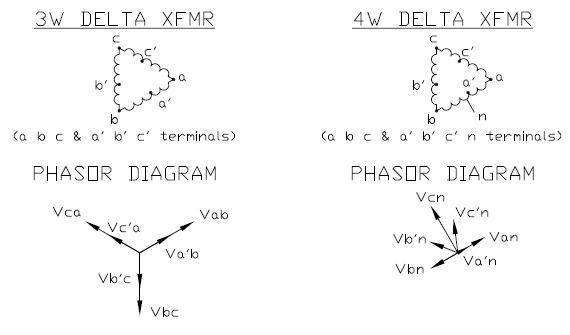crossman
Senior Member
- Location
- Southeast Texas
As for the motors... I just did these experiments in the lab:
Given:
1/4 hp, 3-phase squirrel-cage, induction motor with no mechanical load
208Y/120 3-phase, 4-wire power source
120/240 single-phase power source
Note: any reference to speed is speculation from the observable data.
Experiment A: 208Y/120 A, B, and C connected to motor = motor starts and runs
Experiment B: 208Y/120 Only A and B connected to motor, C phase not connected = motor does not start, just hums. (Motor will run if I give the rotor a spin by hand, but it is obviously not running efficiently or at full speed)
Experiment C: 208Y/120 A, B, and N connected to motor = motor starts and runs, but not quite at full speed compared to A, B, and C connection
Experiment D: 120/240 single phase A, B connected to motor = motor does not start, just hums. (Motor will run if I give the rotor a spin by hand, but it is obviously not running efficiently or at full speed)
Experiment E: 120/240 single phase A, B, and N connected to motor = motor does not start, just hums. (Motor will run if I give the rotor a spin by hand, but it is obviously not running efficiently or at full speed)
This is all as expected from the theory of the situations.
Given:
1/4 hp, 3-phase squirrel-cage, induction motor with no mechanical load
208Y/120 3-phase, 4-wire power source
120/240 single-phase power source
Note: any reference to speed is speculation from the observable data.
Experiment A: 208Y/120 A, B, and C connected to motor = motor starts and runs
Experiment B: 208Y/120 Only A and B connected to motor, C phase not connected = motor does not start, just hums. (Motor will run if I give the rotor a spin by hand, but it is obviously not running efficiently or at full speed)
Experiment C: 208Y/120 A, B, and N connected to motor = motor starts and runs, but not quite at full speed compared to A, B, and C connection
Experiment D: 120/240 single phase A, B connected to motor = motor does not start, just hums. (Motor will run if I give the rotor a spin by hand, but it is obviously not running efficiently or at full speed)
Experiment E: 120/240 single phase A, B, and N connected to motor = motor does not start, just hums. (Motor will run if I give the rotor a spin by hand, but it is obviously not running efficiently or at full speed)
This is all as expected from the theory of the situations.




